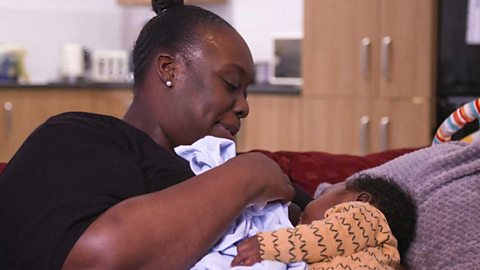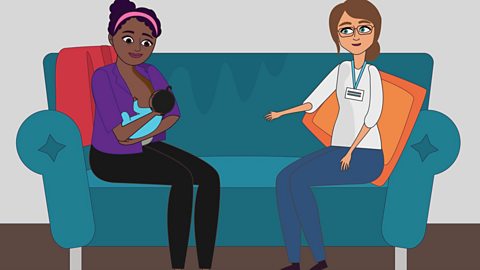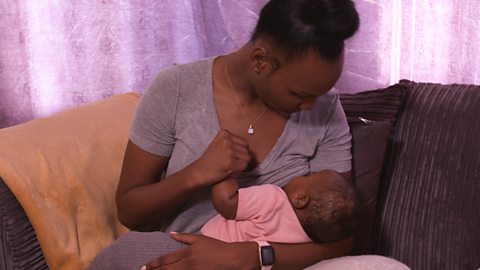Your baby canãt talk but theyãre speaking to you in lots of other non-verbal ways. They use their bodies to tell you what they want and how theyãre feeling, and this includes when theyãre hungry.
ãBabies communicate through their behaviour from the moment they're born. In fact, theyãre communicating before they're born, reacting to sounds like music or activities like mum having a bath. They are great at getting their message across,ã explains Inge Nickell, Director of the , a national charity promoting an understanding of newborn babiesã communication. ãThey show us all sorts of things, what they like and what they don't like, their strengths and sensitivities through their behaviour.ã

Recognising feeding cues is a learning process
Getting to know your babyãs signals is all part of the process of getting to know them, explains Inge.
Your baby is unique and the only way to get to know them, like any new person in your life, is by spending time with them. And it takes time: you don't meet someone for the first time and think, ãRight, we know each other!ã and itãs no different with your baby.
An important part of reading your babyãs cues is identifying their six states of alertness. There are three sleep states: deep sleep, active or light sleep ã when they make lots of small movements including fluttering eyelids and drowsy. And there are three awake states: quiet alert ã a great window to feed them, alert but fussy and finally crying. Babies shift quickly between these states but not always in the same sequence.
ãWhen you can recognise these states and what they might mean, youãll be able to respond to your baby and understand their needs. Theyãll be calmer because their needs are met and theyãll learn that they can trust you. This allows them to focus on engaging with you, which is where they learn about the world. And it's these mutual interactions that help you both feel secure and to bond,ã adds Inge.
Common feeding cues
Newborns need frequent feeds and learning your babyãs individual hunger cues can help guide when these happen.
Knowing when your baby wants a feed and responding to them before they get upset and start to cry is a gradual thing, but keeping them close to you will help you with this learning process.
ãAll babies are different, so it's important parents watch their baby and look for their particular cues,ã says Inge.
Click through the slideshow for some of the most common cues - these include:
- Rooting (turning their head and opening their mouth when their mouth or cheek is touched) or opening their mouth
- Lip licking/smacking
- Stretching
- Sucking fingers
- Making fists
- Moving and wriggling
Another one to look out for is babies opening/closing and moving their eyes.
In time, youãll also learn what signals your baby has to say: ãIãm full now, thanks!ã.

Image caption, Rooting or opening mouth
1 of 6
And learning when they donãt need feeding
Crying is the strongest cue your baby will use to communicate their need for milk ã the kind of last resort to get your attention. But if theyãre crying, it doesnãt automatically mean they need a feed ã it can mean that they need to change position or have a cuddle.
So, learning to recognise their different behavioural states and cues will not only help you recognise when they need to feed but when they donãt.ã explains Inge. ãFor example, during the active sleep state when there's lots of movements and noises, they might even do a little cry. And you might think they need feeding. But actually, they're not quite ready and they can become disorientated if you try to feed them.ã

But donãt worry: all this is part of the getting to know your baby, reassures Inge.
ãEven though sometimes you have to try different things before you get it right, your baby will soon learn that you know what theyãre trying to say and that you will help them.ã
Youãll learn new things about your baby every day ã but reading your baby really is the best book and guidance.ã
For more advice on feeding your newborn, check out the






